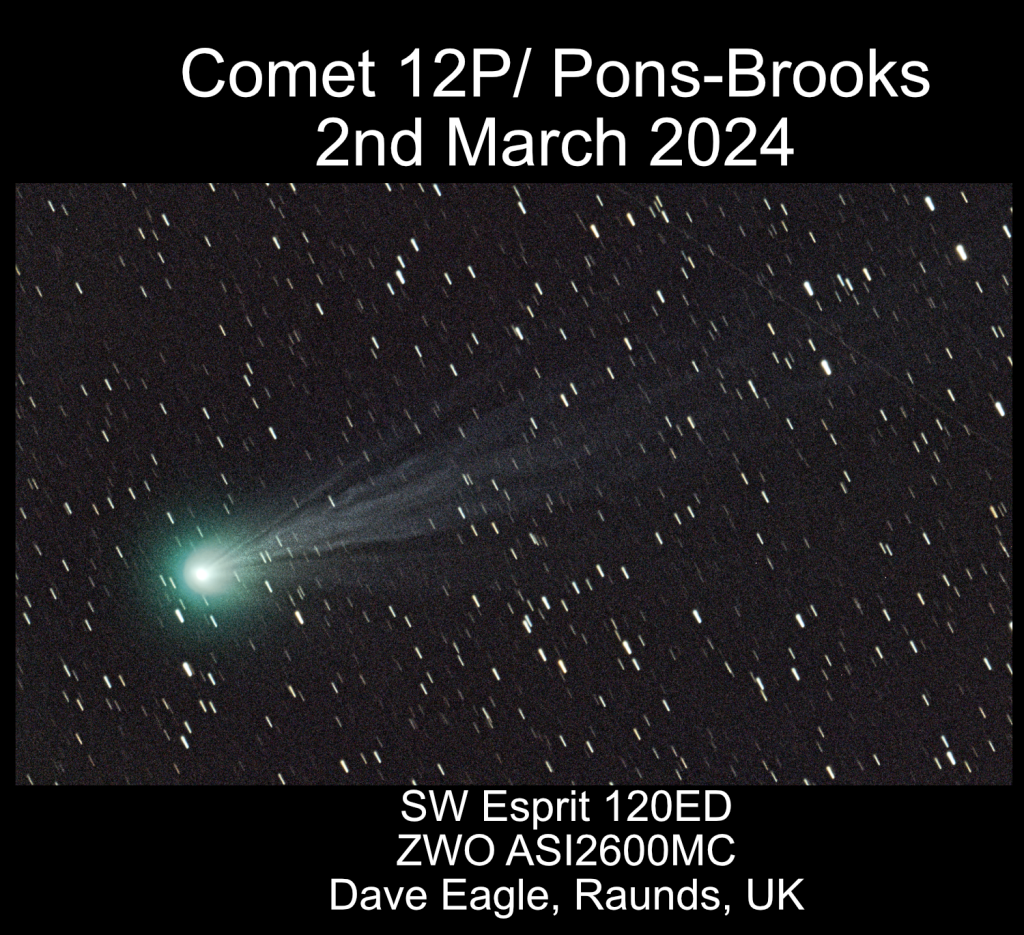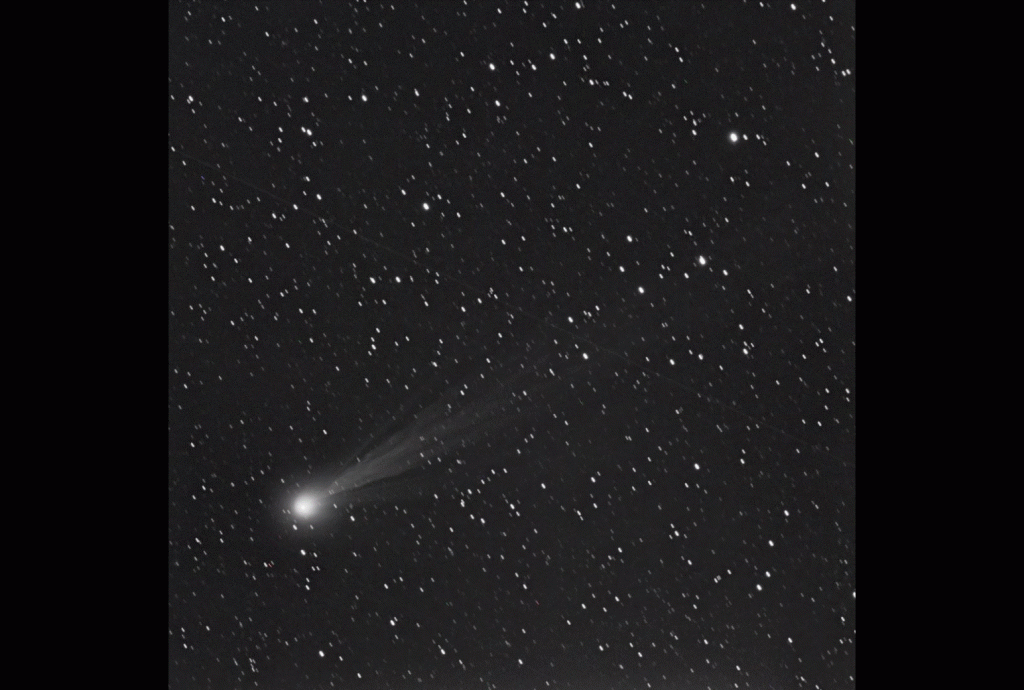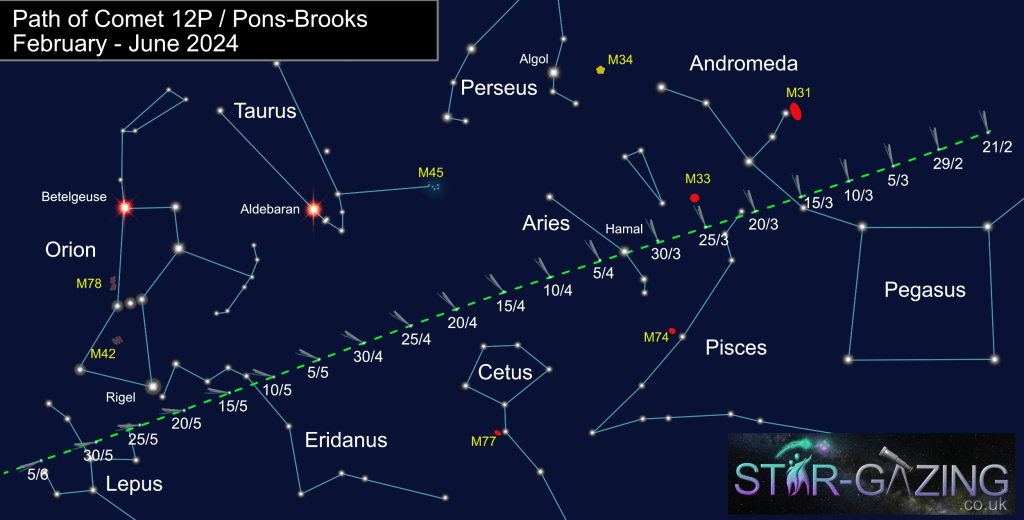After a few recent outbursts, Comet 12P / Pons-Brooks is now starting to brighten and show lots of activity as it approaches perihelion in April.
See my Sky Diary for more details about the comet and many other events:
www.star-gazing.co.uk/Diary
The comet was discovered in 1812 by Jen-Louis Pons and independently rediscovered by William Robert Brooks in 1883, and has an orbital period of 71.3 years, so is known as a Halley-type comet.
It is brightening rapidly and has developed a nice tail, with lots of activity around the coma, as shown in the image and animation below I took on the 2nd of March 2024.
https://www.star-gazing.co.uk/Images/2024/Comet-12P-Animation-20240203.gif
The comet could get bright enough to become visible with the naked eye during March as it passes through Andromeda and into Pisces and Aries.
12P passes south of Messier 33 in Triangulum around the 27th of March, and very close to the bright star Hamal in Aries on the 31st of March and the 1st of May.
Unfortunately, as it gets brighter, it will start getting lower in the south eastern sky each evening, so make the most of any opportunity to view or image it while you can.
If you are lucky enough to be travelling to North America to see the total solar eclipse on the 8th of April, it may even be visible to the naked eye during the eclipse. 🤞
The thin crescent Moon will be close to the comet and Jupiter in the western sky on the evening of the 10th of April, but from the UK the comet is low down after dark and mow starting to get lost in the evening twilight.
Perihelion occurs on the 21st of April, when the comet will be just northeast of the tail of Cetus, when it will be 72.6 million miles from The Sun.
The comet’s magnitude at this time is predicted to be about +4, but it will be very low down in the western sky to the south east of Jupiter, but virtually lost in the twilight and will soon be gone.
This will make it extremely difficult to see, unless it gets extremely bright and produces a long, bright tail.
By the second week of May the comet has moved south into Eridanus but we will not be able to view this.



